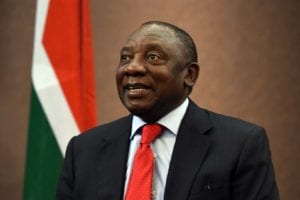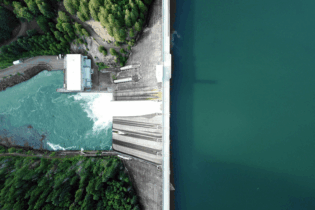While the COVID-19 pandemic has caused damage to the South African economy, Government’s newly unveiled Economic Reconstruction and Recovery Plan, is expected to rebuild the economy and create much needed jobs.
President Cyril Ramaphosa announced details of the long-awaited recovery plan during a joint sitting of the National Council of Provinces and the National Assembly on Thursday. The President highlighted that the pandemic caused additional strain on an already weak economy, to employment, to livelihoods, to public finances and to state owned companies. However, Ramaphosa added that this presents an opportunity not only to recover the ground lost, but to place the country’s economy on a new path to growth. This will be done though the implementation of necessary reforms, removing regulatory barriers that increase costs and create inefficiencies in the economy, securing energy supply, and freeing up digital infrastructure. Massive rollout of infrastructure The plan speaks to four priority interventions with the first being South Africa embarking on a massive rollout of infrastructure. “Infrastructure has immense potential to stimulate investment and growth, to develop other economic sectors and create sustainable employment both directly and indirectly. We have developed a robust pipeline of projects that will completely transform the landscape of our cities, towns and rural areas,” he said. By the end of June 2020, the country had 276 catalytic projects with an investment value of R2.3 trillion. A list of 50 strategic integrated projects and 12 special projects was gazetted in July 2020. These catalytic projects have been prioritised for immediate implementation with all regulatory processes fast-tracked – enabling over R340 billion in new investment. These projects he said, are at various stages of the project life cycle. Government is also exploring the use of credit enhancing instruments to unlock bulk water infrastructure and national roads improvement projects. The infrastructure build programme will focus on social infrastructure such as schools, water, sanitation and housing. It will also focus on critical network infrastructure such as ports, roads and rail that are key to economic competitiveness. Boosting infrastructure projects As South Africa gears up to embark on a massive infrastructure drive, government has established Infrastructure SA and the Infrastructure Fund to prepare and package projects, says President Cyril Ramaphosa. Unveiling the Economic Reconstruction and Recovery Plan in Parliament on Thursday, the President said this approach is already encouraging private investors to help the country build capability for infrastructure delivery within the state and to develop blended financing models. He said the Infrastructure Fund will provide R100 billion in catalytic finance over the next decade, leveraging as much as R1 trillion in new investment for strategic infrastructure projects.He said several projects are already in construction.
These include human settlements projects such as Matlosana N2 in the North West, Lufhereng in Gauteng, Greater Cornubia in KwaZulu-Natal and Vista Park in the Free State. Together these represent an investment value of R44.5 billion. In total, government has gazetted 18 housing projects to the value of R130 billion, which together will produce more than 190 000 housing units. When coming to infrastructure in transport, projects currently under construction include the N1 Polokwane and N1 Musina with a total value of R1.3 billion. Within the next six months, government will fast-track the implementation of gazetted strategic infrastructure projects through the approval of credit enhancing instruments, provision of bulk infrastructure, and speedy processing of water use licenses, environmental impact assessments and township establishment. It will also adapt the infrastructure procurement framework to enable public-private partnerships and unlock new funding. Energy generation Another priority intervention is to expand energy generation capacity with government accelerating the implementation of the Integrated Resource Plan to provide a substantial increase in the contribution of renewable energy sources, battery storage and gas technology. This should bring around 11 800 MW of new generation capacity into the system by 2022. More than half of this energy will be generated from renewable sources. In the immediate term, agreements will be finalised with Independent Power Producers (IPPs) to connect over 2 000 MW of additional capacity from existing projects by June 2021. The Risk Mitigation Power Procurement Programme will unlock a further 2 000 MW of emergency supply within twelve months. Meanwhile, the process to implement bid window 5 of the renewable energy programme has begun while further steps are being taken to enable power generation for own-use. The current regulatory framework will be adapted to facilitate new generation projects while protecting the integrity of the national grid. In addition, the work of restructuring Eskom into separate entities for generation, transmission and distribution continues. A long-term solution to Eskom’s debt burden will be finalised, building on the Social Compact on Energy Security recently agreed to by social partners. “Through these measures, we aim to achieve sufficient, secure and reliable energy supply within two years.” WATCH LIVE STREAM OF ECONOMIC RECOVRY PLAN:







